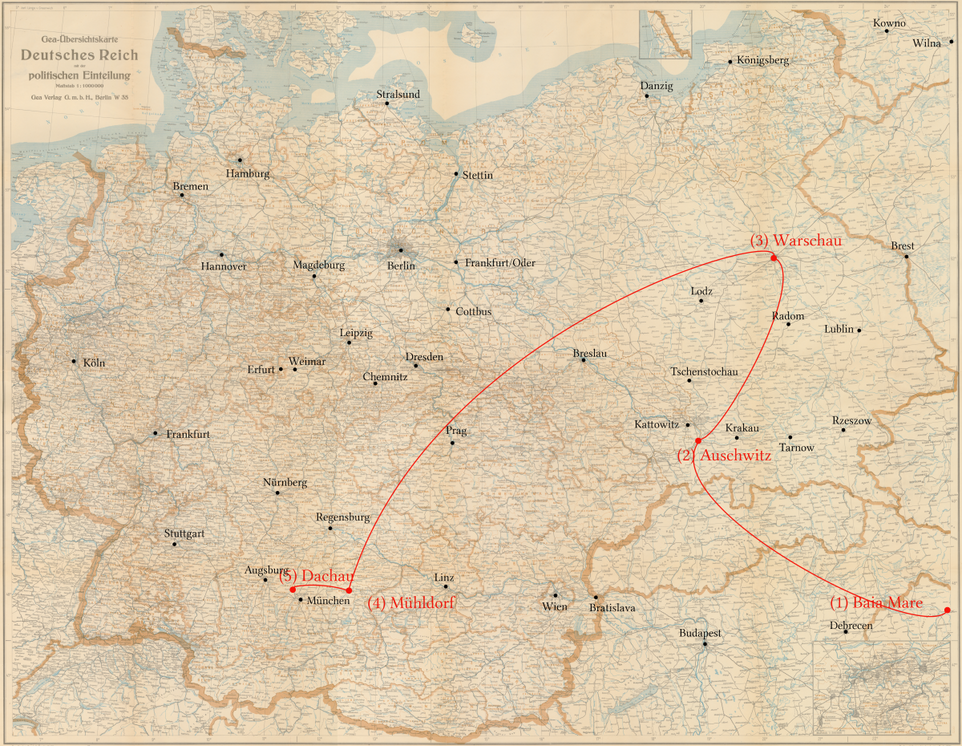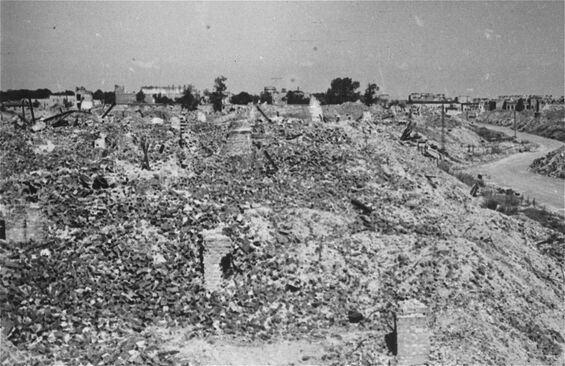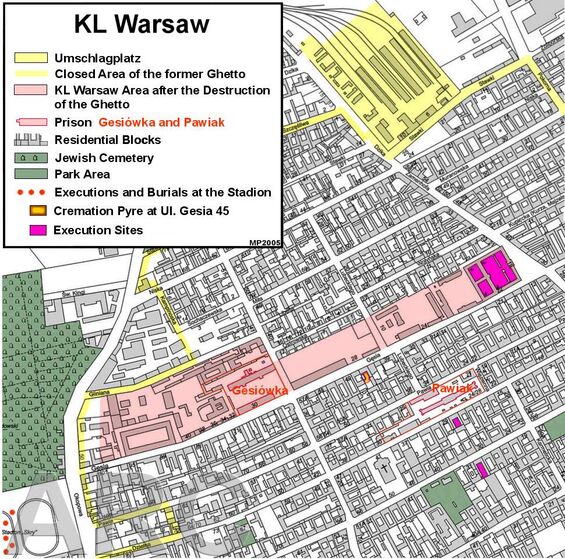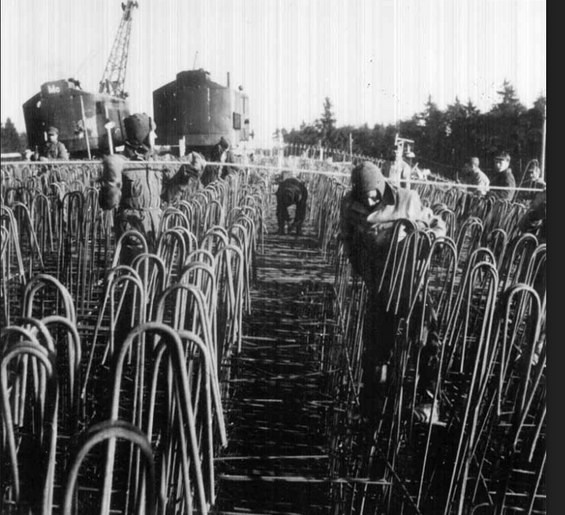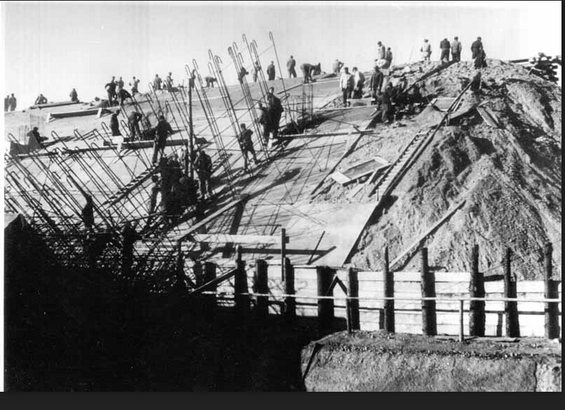Thge Biography of Eugen Brach, Dabrowa Gornicza
Short biography and stations of his persecution
- born on 28.6.1917 in Baiamare/Romania
- from 1942 forced labor in Hungarian labor companies
- Spring 1944 Auschwitz concentration camp
- Warsaw concentration camp (clearing work)
- 6 August1944 Dachau concentration camp
- Dachau concentration camp/Mühldorf subcamp
- September 1945 Romania
- 1948 Southamerica
- 1963 USA
Eugen Brach lost his parents, six siblings, his wife and his daughter to persecution by the Nazis. He was 22 years old when his persecution began.
Before the war
I am submitting this affidavit in connection with my application for compensation for damage to body and health. Before the outbreak of persecution, I lived in Baiamare/Rum together with my wife and my two-year-old daughter. I was a strong, healthy, life-affirming man. I had never needed any medical treatment. My family was extremely wealthy. We had a liquor factory and wine wholesale business in Gelertstrasse in Baiamare/Rum.
Source: Unless otherwise stated: Konrad Kittl files, Eugen Brach affidavit
Start of the persecution
The persecution measures already began in 1942. The young and able-bodied men were dragged away and herded into the Hungarian labor companies. I had to protect myself from such arrests several times by hiding. As my family was extremely wealthy, I was able to buy my way out a few times.
KZ Auschwitz and KZ Warschau
In the spring of 1944, the Nazis invaded my home country and that was the beginning of my ordeal. After a few weeks I was dragged off to Auschwitz concentration camp. My beloved wife and daughter were immediately sent to the gas chambers. My parents and six of my siblings and their families were also murdered immediately. It was horrible. I myself was searched, my hair was shaved off and I was beaten and robbed.
After a few days, I was driven to the Warsaw concentration camp, where I was forced to carry out labor under the most appalling conditions. We were constantly beaten at work. I fell ill with a fever, but I didn't dare say so because I was afraid of being exterminated
| Warsaw concentration camp | |
|---|---|
| Location | Warszawa / Warsaw |
| Territory | General Government (1939-1945) |
| Opening | 15.08.1943 |
| Closing | At an unknown date before 01.05.1944, the concentration camp continued to operate as a subcamp of the Lublin concentration camp |
| Deportations | From 24.07.1944 to Dachau concentration camp, where the arrival was registered on 06.08.1944 |
| Prisons | |
| Gender | Men |
| Type of work | Removal and collection of materials resulting from the demolition of the ghetto |
| Comments | On July 19, 1943, 300 prisoners were already transferred from Buchenwald concentration camp for the construction of the concentration camp. / The establishment of a concentration camp in Warsaw was based on Himmler's wish to remove all traces of what was once the largest Jewish community in Europe from the cityscape: the entire ghetto was to be torn down and all earth bunkers, cellars and underground canals were to be filled in. The site was then to be covered with earth and turned into a park. To this end, the SS-WVHA had a labor camp set up on the former ghetto site from July 1943. The prisoners were transferred from Buchenwald and Auschwitz to Warsaw. The concentration camp continued to operate as a subcamp of the Lublin-Majdanek concentration camp from spring 1944. Around 2,500 concentration camp prisoners and 1,000 Polish workers were deployed for over a year to demolish the buildings and raze the site to the ground. From July 24, 1944, the prisoners were mainly "evacuated" to Dachau concentration camp.</td |
| Source: deutschland-ein-denkmal.de | |
Dachau and Mühldorf
From Warsaw I was driven to the Dachau concentration camp and the Muehldorf concentration camp. Here, despite my already poor state of health, I had
to carry sacks of cement. Once, when they wanted to call me in for a night shift and I was so weak that I didn't think I could keep it up, I pretended to be asleep. This was discovered and I was cruelly punished. I was forced to work naked for 24 hours in the bitterest winter cold. After these 24 hours I was beaten up ... a little later a selection was carried out. As I was only a shadow of a man, I couldn't stand for long and they beat me up again. I only survived because one of the camp doctors said it was a doctor from Munkacz, that I was crazy and I had to go to the invalids' camp. I had to work as a grave digger in the invalids' camp.
Of all those who were deported to this camp at the time - there were 1050 - 270 were still alive.
| Subcamps of the Dachau concentration camp | |
|---|---|
| Location | Mühldorf (Mettenheim-Hart) |
| Name | M I |
| Area | Bavaria |
| Opening | 28.07.1944 |
| Closing | The prisoners left behind were liberated on 02.05.1945. Several thousand prisoners were "evacuated" by train to Poing at the end of April. There they were falsely told that the war was over, whereupon the prisoners left the train. Shortly afterwards, they were shot at by SS and Wehrmacht units and driven back onto the train. A simultaneous air raid cost the lives of countless prisoners. On April 29, 1945, the train was again attacked from the air near Beuerberg. The train was then split up. One transport headed for Tutzing, where the prisoners were liberated on the same day. The other part traveled to Seeshaupt and was liberated on 30.04.1945. |
| Deportations | On 15.09.1944: 277 prisoners to Auschwitz concentration camp, on 25.10.1944: 554 to Auschwitz concentration camp |
| Prisons | In the summer of 1944: first transport of around 1,000 Jews from Auschwitz; later around 2,000 |
| Gender | Men |
| Employment of the prisoners at | Fa. Pollensky & Zöllner, OT-Oberbauleitung Mühldorf |
| Type of work | Construction work |
| Comments | The Kaufering satellite camp around Landsberg and the satellite camps around Mühldorf were built in connection with the plans of the so-called Jägerstab. This was an attempt to break the air supremacy of the Allied forces by increasing the production of fighter planes. To this end, huge concrete bunkers, "Jägerbauten", were to be hastily erected from mid-1944, into which the production facilities that had been severely damaged by bombing raids were to be relocated. Under the direction of OT, four companies were commissioned to build the bunkers: Leonhard Moll was responsible for the "Weingut II" bunker for the "Ringeltaube" project near Landsberg, Karl Stöhr for "Walnuß II" and Philipp Holzmann for "Diana II". All construction sites were located in the northwest of Landsberg. The Polensky & Zöllner company was to build the "Walnuß I" bunker near Mühldorf to the south of Mettenheim. As the demand for labor could not be met by "regular" workers, numerous forced laborers, prisoners of war and, above all, concentration camp inmates were transferred to Landsberg and Mühldorf. As only a few existing buildings could be used, the prisoners were confronted with improvised, completely inadequate accommodation and plagues of vermin and epidemics broke out within a very short time. Around 7,500 men and 800 women were deported to Mühldorf Camp M I, Waldlager V, VI, Mittergars and Thalham. On average, there were around 3,000-5,000 prisoners in the camps. The prisoners were almost exclusively Jews and came to Bavaria mainly via the Auschwitz and Stutthof concentration camps or directly from Hungary. From January 1945, prisoners were mainly deported to the Mühldorf and Kaufering camps from camps in the Reich territory. "M I" was the main camp and location of the SS commandant's office. The number of people who died in the Mühldorf camps cannot be determined. 3,556 prisoners are known to have survived. A death book lists 1,341 deaths for the M I camp. If one adds those deported to Auschwitz and the deaths in the smaller camps and the forest camp V, VI, as well as the prisoners who died during the "evacuation", it can be assumed that almost half of all prisoners died in the Mühldorf camps. [The information on employers and type of work is partly taken from the Ludwigsburg investigations and the ITS. Raim 1992 points out inconsistencies and incompleteness in this regard.] |
| Source: deutschland-ein-denkmal.de | |
After Liberation
After my liberation, I could only be described as a human wreck. Physically, I was in a in a terrible state. I weighed 32 kilos. I was taken to a hospital. I also fell ill also contracted typhoid fever. I stayed in hospital until September 1945, then went to Romania and emigrated to South America in 1948 and have lived in the USA since 1963.
notes
Additional Sources
-----
Compensation Office
---
Notes
---
Photo Credits
- United States Holocaust Memorial Museum
- deathcamps.org
- Stadtarchiv Mühldorf
- Stadtarchiv Mühldorf
